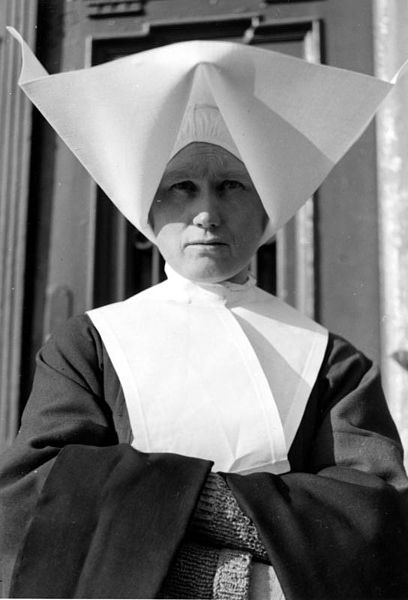4. The Third Revolution’s Psychological Offensive Within The Church
It would be impossible to describe this psychological warfare without carefully examining its development in what is the very soul of the West, that is, Christianity, and more precisely the Catholic religion, which is Christianity in its absolute fullness and unique authenticity.
A. The Second Vatican Council
Within the perspective of Revolution and Counter-Revolution, the greatest success attained by the smiling post-Stalinist communism was the Second Vatican Council’s enigmatic, disconcerting, incredible, and apocalyptically tragic silence about communism.
It was the desire of this Council to be pastoral and not dogmatic. And, in fact, it did not have a dogmatic scope. But its omission regarding communism might make it go down in history as the apastoral Council.
We shall explain the special sense in which we make this statement.
Imagine an immense flock languishing in poor, arid fields and being attacked on all sides by swarms of bees and wasps and birds of prey. The shepherds begin to irrigate the fields and drive away the swarms and birds. Can this activity be termed pastoral? In theory, certainly.
However, if at the same time the flock were under attack by packs of voracious wolves, many of them covered with sheepskins, and the pastors fought against the insects and birds without making any effort to unmask or drive away the wolves, could their work be considered pastoral, proper to good and faithful shepherds?
In other words, did those in the Second Vatican Council who wished to scare away the lesser adversaries but gave free rein — by their silence — to the greater adversary act as true pastors?

A pre-Vatican II habit. One of the many changes that were made as a result of the Second Vatican Council. Photo Bundesarchiv, Bild 121-0320 / CC-BY-SA 3.0
Using “aggiornate” tactics (about which the least that can be said is that they are contestable in theory and proving ruinous in practice), the Second Vatican Council tried to scare away, let us say, bees, wasps, and birds of prey. But its silence about communism left full liberty to the wolves. The work of this Council cannot be inscribed as effectively pastoral either in history or in the Book of Life.
It is painful to say this. But, in this sense, the evidence singles out the Second Vatican Council as one of the greatest calamities, if not the greatest, in the history of the Church. From the Council on, the “smoke of Satan”1 penetrated the Church in unbelievable proportions. And this smoke is spreading day by day, with the terrible force of gases in expansion. To the scandal of uncountable souls, the Mystical Body of Christ entered a sinister process of self-destruction, as it were.
1. Cf. sermon of Paul VI on June 29, 1972.
Plinio Corrêa de Oliveira, Revolution and Counter-Revolution (York, Penn.: The American Society for the Defense of Tradition, Family, and Property, 1993), Part III, Chapter II, pg. 144 – 145.












